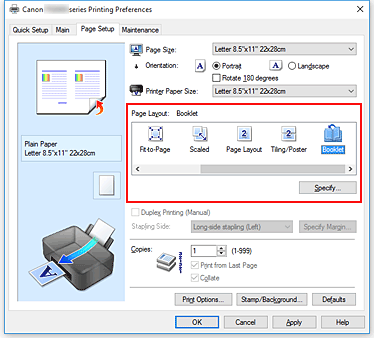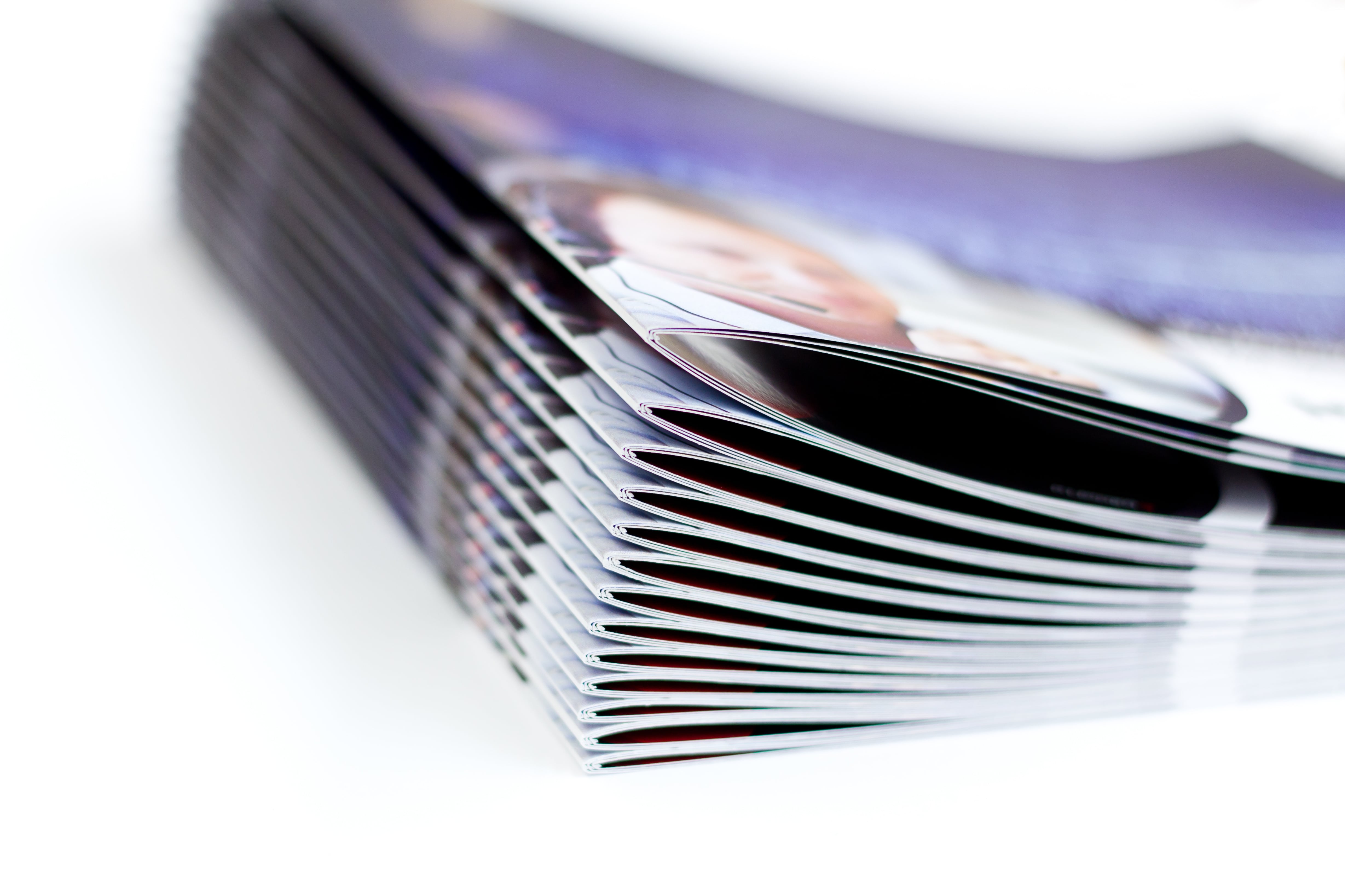Creative Finishing Techniques That Elevate Your Booklet Printing Results
Creative Finishing Techniques That Elevate Your Booklet Printing Results
Blog Article
The Important Guide to Understanding Pamphlet Printing Options and Techniques
The procedure of pamphlet printing includes several considerations that can greatly affect the end product. From selecting the appropriate layout and dimension to recognizing the subtleties of binding methods, each selection plays a crucial duty. In addition, variables such as paper supply and printing techniques more influence the performance of the pamphlet. As one navigates these options, it comes to be important to grasp just how they interconnect and what that indicates for the total outcome.
Comprehending Booklet Sizes and formats
When thinking about brochure printing, understanding the numerous formats and dimensions available is crucial for achieving the desired presentation. Pamphlets can be produced in many formats, consisting of saddle-stitched, spiral-bound, and perfect-bound, each offering distinct advantages. Usual sizes vary from common letter (8.5 x 11 inches) to smaller choices like A5 (5.8 x 8.3 inches), allowing for versatility based upon material and target audience.Selecting the ideal size can affect both the format and reader interaction. Bigger sizes may match visually driven content, while smaller styles might be more portable and easy to use. In addition, the number of web pages affects the choice of binding technique, as thicker pamphlets might require sturdier bindings. Eventually, recognizing these aspects allows for a much more customized technique, ensuring that the final product lines up with the designated message and aesthetic, improving the total performance of the interaction.
Choosing the Right Paper Supply

Binding Techniques: Factors To Consider and alternatives
When it comes to binding techniques for booklets, several options are available, each with distinct benefits. Saddle stitch binding uses an economical option for thinner booklets, while ideal binding methods give an even more sleek try to find thicker publications. Wire-O binding stands apart for its toughness and convenience of usage, making it ideal for files that require versatility.
Saddle Stitch Binding
Saddle stitch binding provides a cost-efficient and sensible remedy for constructing pamphlets, making it a popular choice among businesses and publishers. This binding approach entails folding sheets of paper in fifty percent and stapling them along the fold line, producing a neat and orderly look. Commonly ideal for brochures with a lower page matter, saddle sewing is suitable for magazines, brochures, and instructional products. The simplicity of this technique enables fast production and is frequently favored for brief runs or marketing products. Nevertheless, it is necessary to keep in mind that saddle stitch binding might not be suitable for thicker pamphlets, as the back may not stand up under boosted weight. In general, it remains a trusted choice for many printing tasks.
Perfect Binding Techniques
Perfect binding is an extensively utilized strategy that offers a professional and refined coating to publications and pamphlets. This technique involves gluing the web pages with each other at the back making use of a strong adhesive, enabling a clean side and the ability to hold a bigger variety of pages contrasted to saddle stitching. Perfect binding is especially ideal for thicker booklets, such as directories and annual reports, where a sturdy, level back is desired. Additionally, it uses the alternative for a printed cover that can be created to enhance visual charm. Factors to consider such as web page count, paper weight, and the intended use of the brochure must be taken right into account, as they can affect resilience and general high quality.
Wire-O Binding Alternatives
Wire-O binding, recognized for its durability and flexibility, provides an exceptional alternative for pamphlets that call for very easy web page transforming and a specialist look. This binding approach uses a collection of steel loopholes that hold web pages safely, enabling them to exist level when open. It is especially appropriate for presentations, brochures, and handbooks due to its robust nature. Wire-O binding is readily available in different shades and diameters, suiting different page matters and thicknesses. Additionally, it allows the incorporation of tabs and covers, improving the booklet's total visual. Considerations for Wire-O binding consist of the selection of cable color, the dimension of the loops, and the extent of customization wanted, all of which can profoundly affect the end product's appearance and functionality.
Digital vs. Offset Printing: Which Is Best for You?
When picking a printing technique for booklets, recognizing the distinctions between electronic and balance out printing is important. Digital printing makes use of contemporary technology to create top quality prints quickly and cost effectively, making it perfect for brief runs or jobs calling for quick turn-around times. It enables modification, supplying the ability to publish on-demand with minimal waste.In comparison, offset printing is a standard method that masters producing big amounts with constant top quality. It involves moving ink from a plate to a rubber covering, then to the paper, which causes dynamic shades and precise details. However, balance out printing typically needs longer arrangement times and is more economical for bigger volumes.Ultimately, the choice between electronic and counter printing depends on job needs, budget, and desired amount. For small, time-sensitive projects, digital may be the very best selection, while countered may be more suitable for larger, high-grade manufacturings.

Designing Your Booklet: Tips and Ideal Practices
When developing a brochure, careful attention to continue reading this format, typeface choice, and color usage can substantially boost its efficiency. A well-structured layout guides the viewers's eye, while proper font styles guarantee readability and share the desired tone. Additionally, reliable use color can stimulate emotions and emphasize crucial info, making the overall layout a lot more impactful.
Choosing the Right Format
Exactly how can one efficiently choose the ideal design for a pamphlet? Initially, it is important to evaluate the brochure's purpose and target market. A tidy, organized design enhances readability and interaction. Utilizing a grid system can help in aligning aspects consistently, developing an expert look. Additionally, integrating aesthetic pecking order via varying dimensions and positionings of pictures and message can guide the visitor's eye and stress essential details. It is also important to leave sufficient white room, which stops congestion and permits much better focus. Ultimately, examining various formats through mock-ups can supply understanding right into exactly how the style carries out in real-world circumstances, making certain that the final product meets both visual and useful requirements.
Selecting Suitable Font Styles
A well-chosen font style can significantly boost the total layout of a pamphlet, complementing the layout and reinforcing the web content's message. The selection of fonts should consider readability, especially for body text, as it guarantees the info comes to all viewers. Sans-serif typefaces are often preferred for electronic styles, while serif font styles can lend a conventional feel in published products. It's a good idea to limit font selections to two or three to keep aesthetic comprehensibility. Furthermore, font style size plays a vital role; headings need to be unique yet not frustrating, while body message need to be comfy for reading. When selecting typefaces, positioning with the booklet's theme and target audience is essential for reliable communication and visual charm.
Reliable Usage of Color
Shade works as a powerful tool in pamphlet style, directing and shaping assumptions reader feelings. It can evoke feelings of excitement, depend on, or peace, relying on the shades picked. Developers ought to think about shade theory principles, making sure that the chosen palette lines up with the pamphlet's message and target market. Utilizing cozy shades like red and orange can produce necessity, while cooler tones like green and blue foster tranquility.Additionally, comparison plays a vital role; complementary colors can enhance readability and visual appeal. Uniformity in shade use throughout web pages better reinforces brand name identity and cohesion. Eventually, reliable color application not just captures focus however additionally strengthens the brochure's purpose, making it a necessary aspect of successful design.
Finishing Touches: Coatings and Unique Results
While several take into consideration the web content and layout of a pamphlet one of the most important components, the completing touches, such as coverings and unique effects, play a necessary function in enhancing its overall appeal. Coatings can supply protection and durability, ensuring that the pamphlet holds her explanation up against deterioration. Matte surfaces offer a sophisticated, non-reflective surface area, while glossy coatings can make shades appear even more distinctive and lively. Special results, like embossing or foil marking, add a responsive dimension that can create a remarkable impression. These strategies can highlight certain areas, attracting attention to crucial information or developing visual passion. Additionally, UV layer can offer a high-shine coating that raises the total look.Together, these finishing touches not just enhance the brochure's visual however additionally communicate professionalism and interest to information, eventually leaving a long-term impact on the visitor.
Price Considerations for Pamphlet Printing
Understanding the different price considerations for brochure printing is crucial for companies and businesses aiming to enhance their spending plans. Key elements affecting expenses consist of the option of binding, ink, and paper techniques. Higher high quality materials, such as exceptional paper or specialized inks, usually increase the general expense. Furthermore, the size and page count of the brochure play a substantial duty; bigger pamphlets require more resources and time to produce.Another important consideration is the printing technique, whether digital or balanced out, as each has its own prices structure and suitability for different quantities. Businesses ought to likewise factor in design costs, which can vary based on intricacy and the usage of specialist solutions. Inevitably, delivery and handling charges can include in the overall, particularly for big orders. By assessing these aspects, organizations can make informed choices that align with their monetary capabilities while attaining the desired quality in their published products.
Often Asked Inquiries
What Are the Ecological Effects of Brochure Printing?
The environmental impacts of pamphlet printing consist of deforestation from paper production, carbon exhausts from transport, and waste generation from disposed of materials - Booklet Printing. Lasting methods, such as utilizing recycled paper and environmentally friendly inks, can mitigate these results
Exactly How Can I Make Sure Color Precision in My Brochure?
To guarantee shade accuracy in a booklet, one need to use calibrated displays, utilize specialist color profiles, carry out test prints, and pick top notch printing services that supply color matching and proofing alternatives for finest results.
What Is the Normal Turnaround Time for Pamphlet Printing?
The common turn-around time for brochure printing differs depending upon the intricacy and quantity - Booklet Printing. Usually, it varies from a few days to two weeks, affected by variables such as publishing techniques and finishing requirements
Exist Minimum Order Quantities for Brochure Printing?

Can I Publish Pamphlets in Multiple Languages?
Printing brochures in several languages is feasible. Lots of printing solutions supply options for multilingual or bilingual layouts, enabling for effective communication. Cautious planning assurances that create components suit various languages without jeopardizing readability or aesthetic appeals. Additionally, variables such as paper supply and printing techniques further affect the performance of the pamphlet. When taking into consideration pamphlet printing, recognizing the numerous layouts and dimensions offered is necessary for accomplishing the preferred presentation. When selecting a printing method for pamphlets, recognizing the distinctions between digital and offset printing is essential. In addition, the dimension and page count of the pamphlet play a substantial function; larger pamphlets call for more resources and time to produce.Another important factor to consider is the printing method, great site whether digital or countered, as each has its very own prices structure and viability for different amounts. The ecological effects of booklet printing consist of logging from paper production, carbon exhausts from transport, and waste generation from discarded products.
Report this page